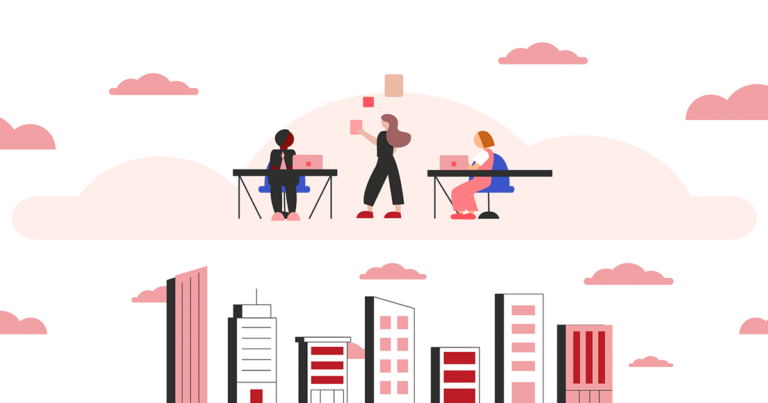If you asked somebody in the software-as-a-service (SaaS) or digital technology industry about cloud computing, they would likely tell you that the cloud is table stakes. (The gist: storing and running software digitally is the base standard.) It might not surprise you to learn that the parking industry lags behind, relying on outdated software and infrastructure. You know the drill—you have to spend thousands of dollars when new equipment is updated, and if something goes wrong with that equipment’s software, you have to wait until someone comes to repair it.
That’s changing now. Parking owners and operators are adopting the cloud, switching out legacy equipment for hardware and software that make parking frictionless for customers. Changes are happening so swiftly that, often, operators have to adapt while simultaneously learning all about the cloud. Business owners learning the ropes are asking questions like: How does it operate? Are there protocols for cloud security? What makes FlashParking software so easy to implement across locations? Part of the answer lies within FlashParking’s wide network of tech integrations and the hardware-as-a-service (HaaS) model, while the other part is in how we operate specifically on a multi-tenant cloud.
The multi-tenant cloud is a primary reason our users receive such convenient service. It keeps operations efficient and reduces network redundancy. Aside from the key practical benefits cloud-based systems offer, our technology differs from single-tenant cloud systems because it’s powered by Microsoft’s Azure platform. It utilizes the computing space afforded by such a robust system. The results: exceptional stability, along with many benefits.
Lead the Charge
A FREE eBook breaks down the numbers behind the EV revolution and highlights parking’s critical role in the big picture. Hint: there’s a big opportunity you don’t want to miss.
What Are The Benefits of Multi-Tenant vs. Single-Tenant?
While there are certain cases in which a single-tenant system might be preferable, they are generally reserved for larger corporations that have the necessity and resources to maintain their own cloud server. They also have the staff that can maintain their own servers as needed. For many other companies, the benefits of multi-tenant architecture are difficult to ignore. With lower barriers to entry, companies will find it easier to adopt multi-tenant systems to match their current needs—particularly parking owners and operators with regional or national locations.
When It’s Time To Consider The Cloud
If you’re planning on staying relevant in parking in the next five years, you should consider a system that runs on the cloud. Owners and operators need to look no further than the direction of the industry as a reason why. Parking is now becoming more than just a singular operation, and the standard garage is now adapting to trends in mobility. As more technologies, apps, and integrations are introduced for consumers, businesses will find it challenging to keep up unless they integrate with a cloud system that can consistently harness the powers of the newest innovations.
It’s important to reiterate the key goal any parking operation should have: to make parking as easy as possible. When you’re planning updates to your technology and processes, ask yourself if your systems are optimized for the parker. If not, then consider solutions with a multi-tenant cloud architecture to make sure they are.
Join the Parking Revolution, Subscribe to Our Newsletter
We’re disrupting the parking industry because we believe our customers, consumers, and cities deserve better.

